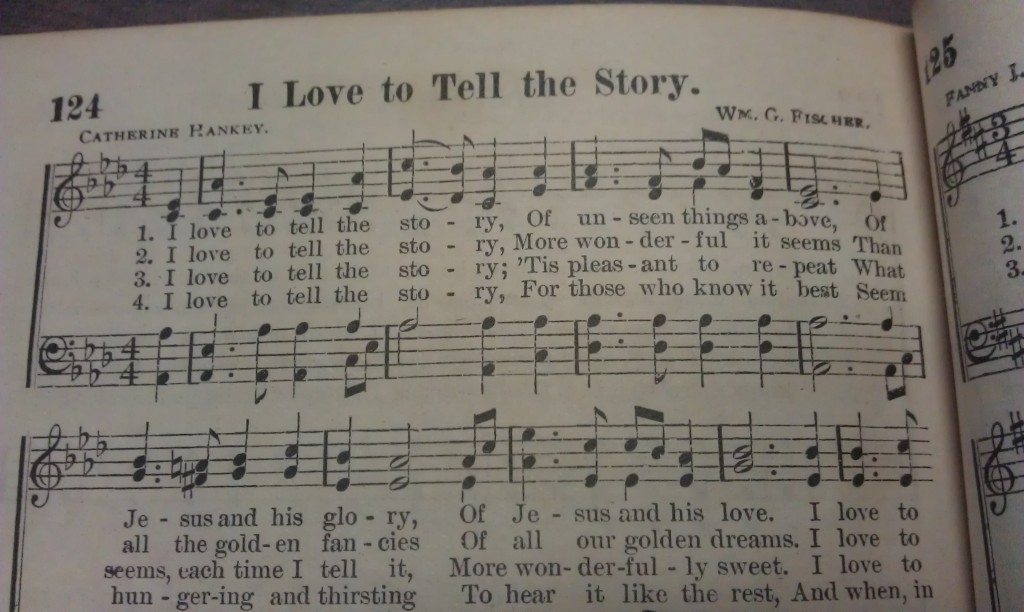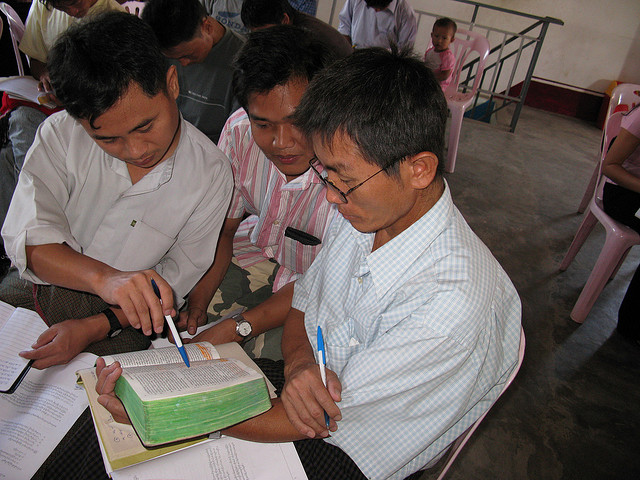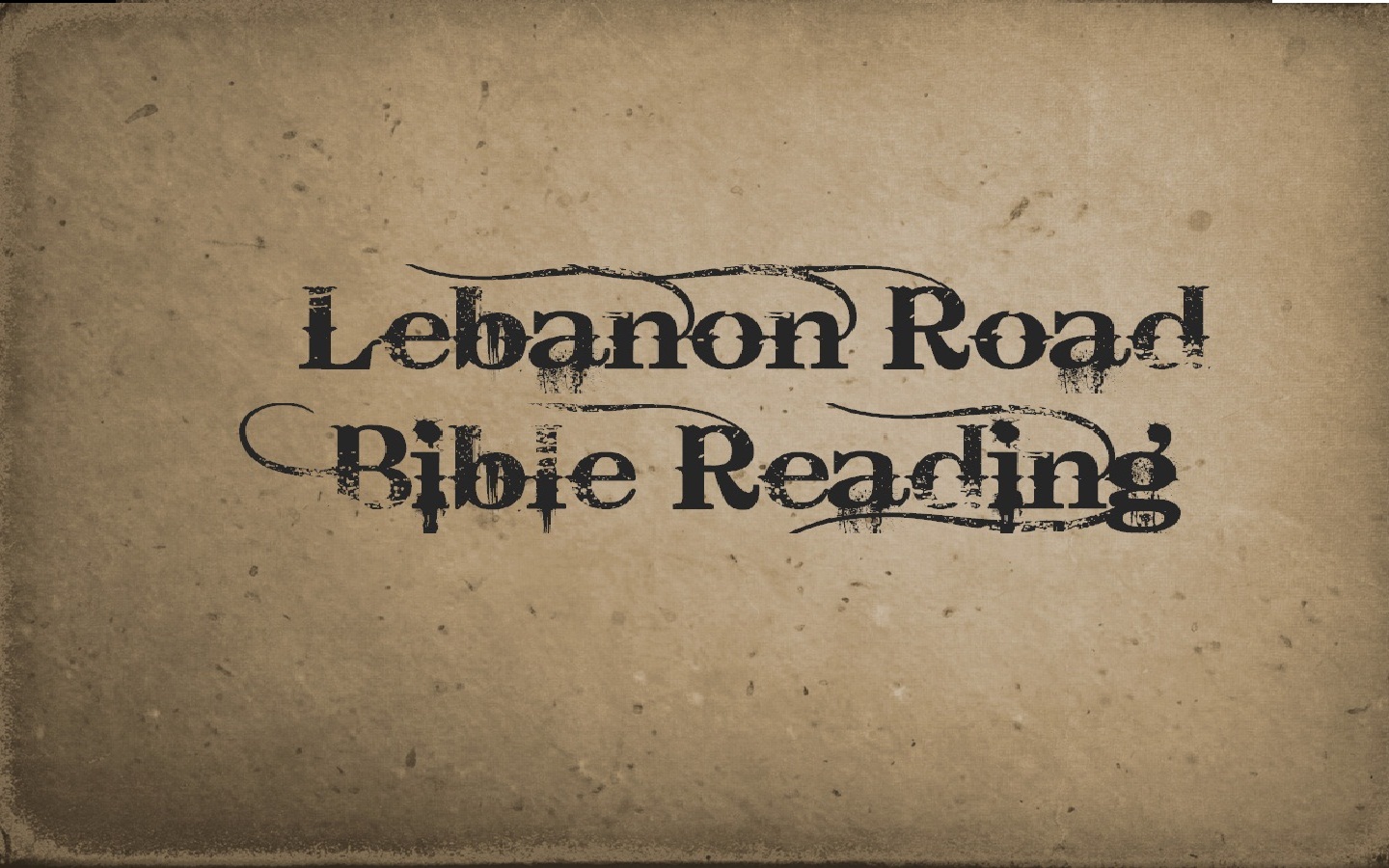Hymn Reflection : I Love to Tell the Story
So far as I know, the author of our hymn for this week, Arabella Katherine Hankey (sometimes published as “Catherine”), only wrote two hymns, but they are remarkable songs.
Hankey was born and raised in London and was strongly influenced by a group called the “Clapham Sect” of the Anglican Church. This sect, clearly under the influence of William Wilberforce, was opposed to slavery, and also wished to reform prisons, education, and make other social changes through the work of the church. Though the Clapham Sect was basically gone by the time she reached her formative years, people like Katherine Hankey carried on the ideals for decades.
To show more of Hankey’s passionate heart, Robert Morgan writes,
Early in life, Kate became involved in religious work. As a young girl, she taught Sunday school; and when she was eighteen she organized a Bible study for factory girls in London. (This Bible study was never large, but the girls became close and fifty years later, five of them met together at Kate’s funeral.) When her brother fell ill in Africa, Kate traveled there to bring him home. That trip sparked a passion for foreign missions, and in later life Kate devoted all proceeds from her writing to missionary work. (Then Sings My Soul: Book 2, page 109)
As she entered her 30’s, Katherine became very ill. She had been so involved in efforts through the Church that doctors ordered her to stop and stay in bed for an entire year. She complied, in part. Though she didn’t travel as she had before, she remained a missionary via writing.
The most famous writing from that year was done in two parts. It was a poem that, when completed, was 100 stanzas in length. The first part is called “The Story Wanted,” while the second part is “The Story Told.” She completed the entire poem in 1866, though it took her most of the year to write it.
In 1867, the Young Men’s Christian Association held its international convention, and one of the leaders ended a sermon by quoting from the poem. William Doane, who heard the sermon, put part of the song to music, and gave us “Tell Me the Old, Old Story.”
It wasn’t until two years later, though, that another hymn-writer, William Fischer, created a unique melody (which he called “Hankey”) for another part of the hymn. In 1869, “I Love the Tell the Story” was first published in an American songbook, and has been a favorite hymn of many ever since.
Thanks to the wonders of technology, you can read an 1875 publication of Hankey’s entire poem right here:
This hymn is obviously a missionary song. Singing it should cause us to swell with motivation to tell all we know about Jesus Christ, because He has done so much for us. Knowing where this song came from, though, only adds to that appeal. When we consider that a lady who was bedridden for a year wrote it so that others might know about the Lord, we have no excuse to avoid using our talents to tell that “old, old story of unseen things above.” After all, that story is one “that I have loved so long.” How can I help but share it?
Picture from My Hymnal Collection

Lyrics
I love to tell the story of unseen things above,
Of Jesus and His glory, of Jesus and His love.
I love to tell the story, because I know ’tis true;
It satisfies my longings as nothing else can do.
I love to tell the story, ’twill be my theme in glory,
To tell the old, old story of Jesus and His love.
————————–
Photo credit: alvanman on Creative Commons
To receive our blog posts via rss, click here. To subscribe via email (and get a free e-book), click here.
To sign up for our free monthly enewsletter (and get a free e-book), click here.
Click the banner to visit our publishing website





2 Comments
Tim
Adam,
Thanks for bringing back Hymn Reflections. As someone who enjoys leading, and singing, I enjoy reading and learning about the songs we sing.
Adam Faughn
You forgot one very important thing. You are one who both sings and leads very well!